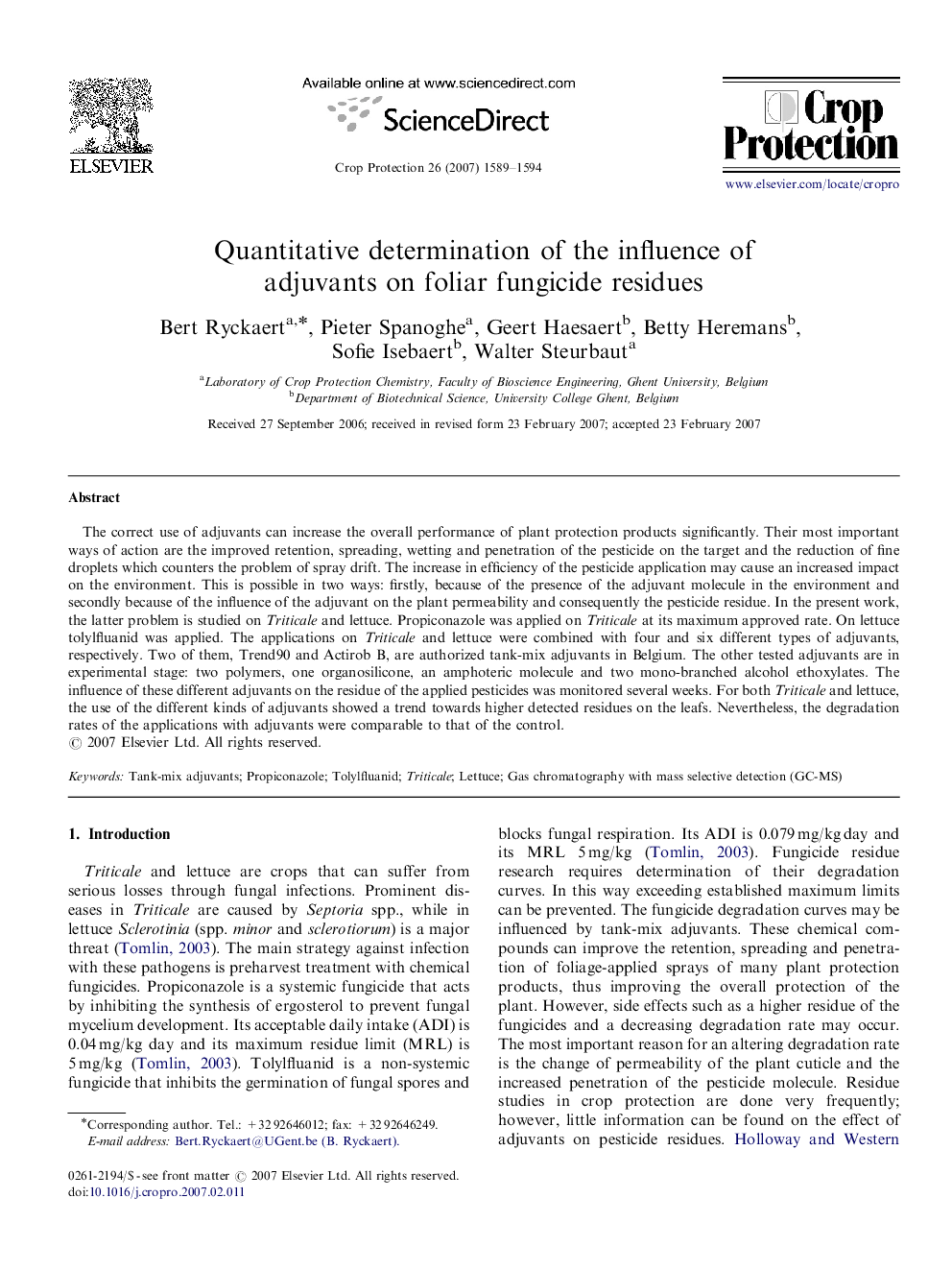| Article ID | Journal | Published Year | Pages | File Type |
|---|---|---|---|---|
| 4507787 | Crop Protection | 2007 | 6 Pages |
The correct use of adjuvants can increase the overall performance of plant protection products significantly. Their most important ways of action are the improved retention, spreading, wetting and penetration of the pesticide on the target and the reduction of fine droplets which counters the problem of spray drift. The increase in efficiency of the pesticide application may cause an increased impact on the environment. This is possible in two ways: firstly, because of the presence of the adjuvant molecule in the environment and secondly because of the influence of the adjuvant on the plant permeability and consequently the pesticide residue. In the present work, the latter problem is studied on Triticale and lettuce. Propiconazole was applied on Triticale at its maximum approved rate. On lettuce tolylfluanid was applied. The applications on Triticale and lettuce were combined with four and six different types of adjuvants, respectively. Two of them, Trend90 and Actirob B, are authorized tank-mix adjuvants in Belgium. The other tested adjuvants are in experimental stage: two polymers, one organosilicone, an amphoteric molecule and two mono-branched alcohol ethoxylates. The influence of these different adjuvants on the residue of the applied pesticides was monitored several weeks. For both Triticale and lettuce, the use of the different kinds of adjuvants showed a trend towards higher detected residues on the leafs. Nevertheless, the degradation rates of the applications with adjuvants were comparable to that of the control.
